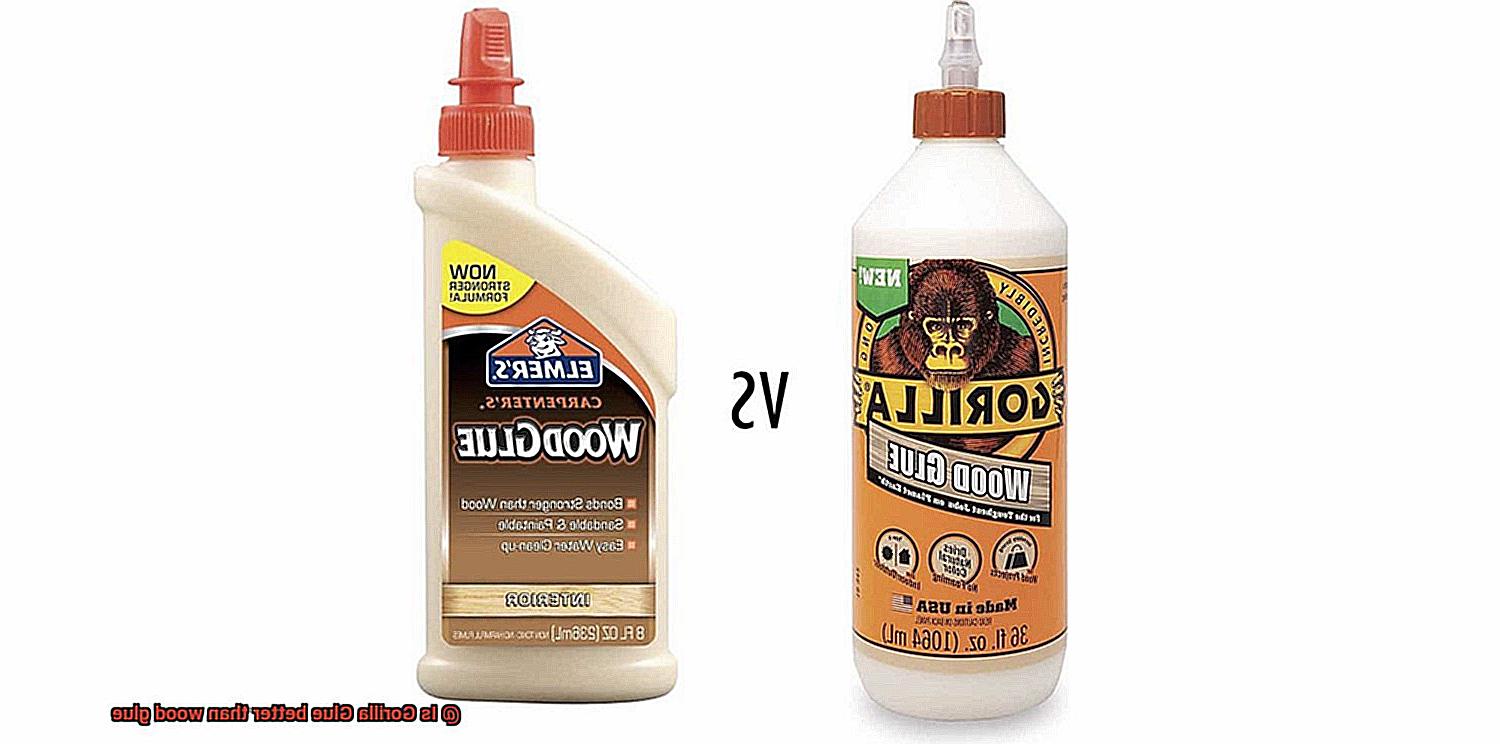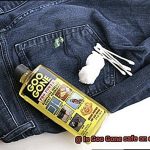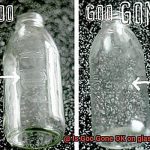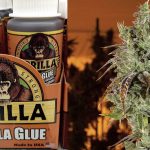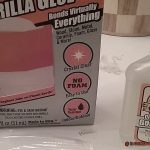When it comes to woodworking and DIY projects, choosing the right adhesive can make or break your final result. In the world of adhesives, two contenders often come up: Gorilla Glue and wood glue. But which one reigns supreme? Well, that depends on your specific project and its requirements.
Wood glue has long been a favorite among woodworkers for its strong bond and ease of use. It’s a tried-and-true staple in the woodworking community. On the other hand, Gorilla Glue has gained popularity thanks to its versatility and exceptional strength. In this blog post, we’ll explore the differences between these two glues, with insights from both casual DIYers and experienced woodworkers. By the end, you’ll have all the information you need to make an informed decision for your project.
Casual Perspective:
Contents
- 1 Overview of Gorilla Glue
- 2 Overview of Wood Glue
- 3 Advantages of Gorilla Glue over Wood Glue
- 4 Disadvantages of Gorilla Glue Compared to Wood Glue
- 5 Drying Time for Gorilla Glue and Wood Glue
- 6 Expansion of Gorilla Glue
- 7 Water Resistance of Gorilla Glue and Wood Glue
- 8 Cost Comparison Between Gorilla and Wood Glues
- 9 Conclusion
For those of us who love getting our hands dirty with DIY projects, Gorilla Glue is a game-changer. It’s perfect for fixing broken furniture or crafting small wooden masterpieces. What sets it apart is its ability to bond not just wood but also metal, ceramics, plastics – you name it. With Gorilla Glue in your toolbox, you can say goodbye to multiple trips to the hardware store and hello to convenience.
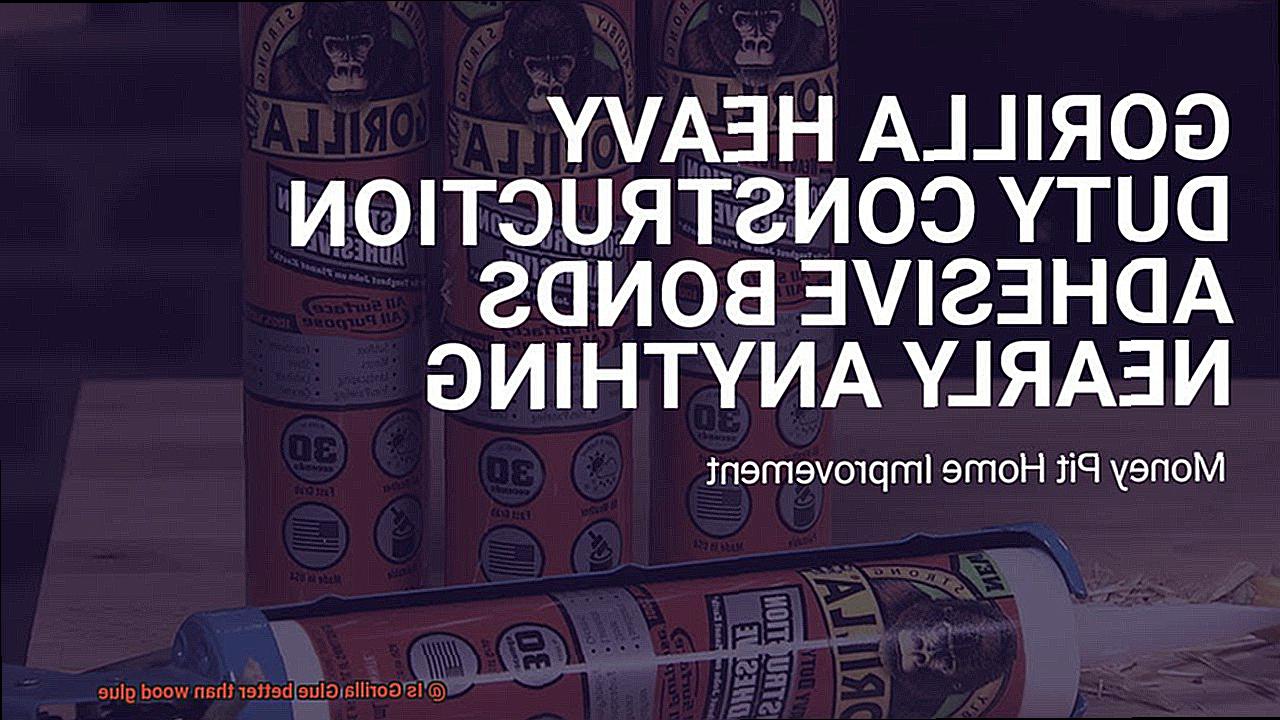
Professional Perspective:
Woodworking professionals often swear by wood glue for good reason. Its specialized formulation is designed specifically for bonding porous surfaces like wood. This means it creates a strong and durable bond that can withstand heavy stress on joints. Plus, its high initial tack allows for repositioning before it fully sets, ensuring precise alignment every time. And let’s not forget about its quick drying time – pros love how efficiently they can complete projects without sacrificing quality.
Choosing the Right Adhesive:
So how do you decide which glue is better? Well, it all comes down to your project’s needs. If you’re working exclusively with wood and strength is your top priority, wood glue is the way to go. It excels in joining wooden materials with precision and durability, making it perfect for cabinetry, furniture making, and other woodworking applications.
However, if your project involves bonding different materials or you value the convenience of a single multipurpose adhesive, Gorilla Glue might be your best bet. Its versatility and exceptional strength make it suitable for a wide range of applications beyond woodworking. Whether you’re repairing garden pots, creating mixed
Overview of Gorilla Glue
Look no further than Gorilla Glue, the adhesive that is taking the world by storm. With its exceptional strength, versatility, and waterproof properties, Gorilla Glue has become the go-to choice for DIYers and professionals alike.
Unleash the Power of Bonding:
Gorilla Glue’s secret lies in its polyurethane-based formula, ensuring a strong and durable bond on a variety of materials. From wood to metal, stone to ceramics, Gorilla Glue is designed to provide an unbeatable hold. Its ability to expand as it cures enables it to fill in gaps and create a bond that is second to none.
Conquer Any Project:
Whether you’re working on indoor or outdoor projects, Gorilla Glue has got you covered. Its waterproof feature ensures that it can withstand moisture and exposure to the elements without compromising its adhesive properties. So go ahead and build that garden bench or repair that leaky pipe with confidence.
Versatility at Your Fingertips:
Gorilla Glue’s versatility in application is one of its greatest advantages. It can be used on a wide range of materials, including wood, metal, plastics, ceramics, leather, and more. Say goodbye to multiple adhesives for different materials – Gorilla Glue does it all.
Time is on Your Side:
No one likes waiting around for glue to dry. Luckily, Gorilla Glue offers a quick drying time. Once applied, it typically sets within 1-2 hours, allowing you to complete your projects efficiently and move on to the next exciting endeavor.
A Word of Caution:
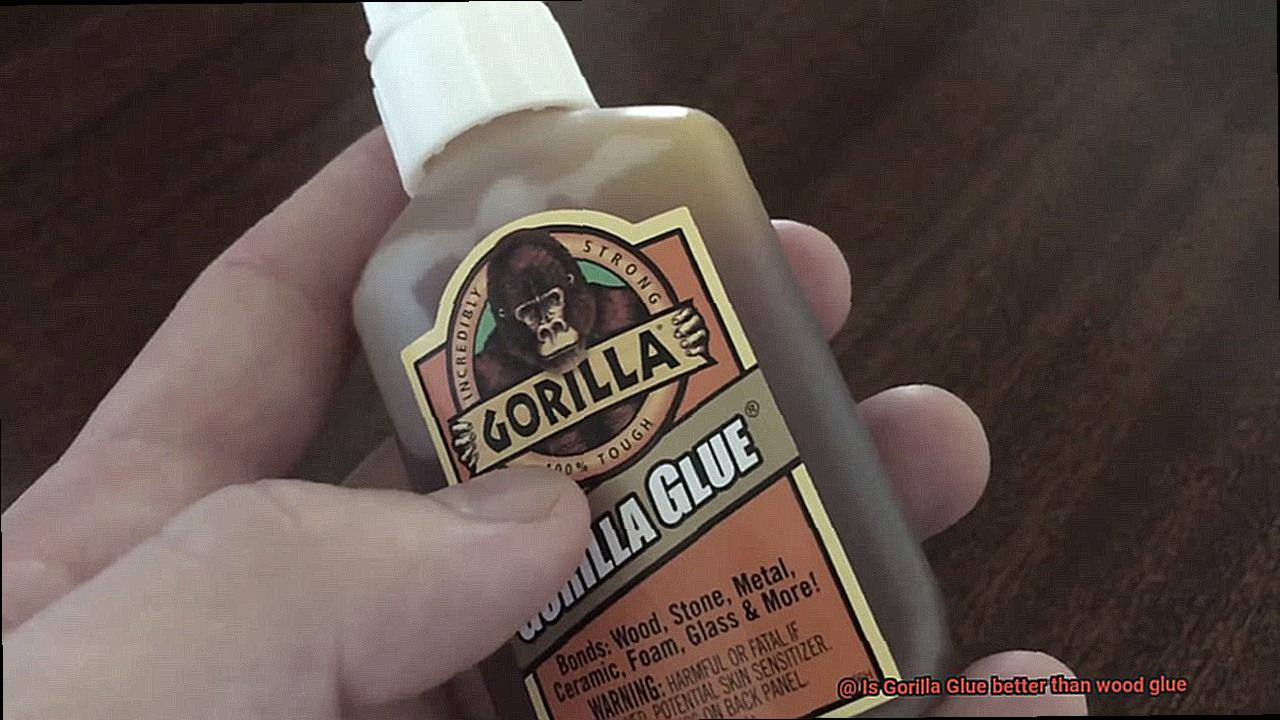
While Gorilla Glue is a powerhouse adhesive, it does have some limitations. It expands significantly during the curing process, so make sure to control it properly to avoid any mishaps. Additionally, once Gorilla Glue is cured, it can be challenging to remove, so exercise caution during application.
Overview of Wood Glue
Wood glue may not be the most captivating topic, but it is undoubtedly a game-changer in the world of woodworking and carpentry. If you’ve ever wondered why wood glue is so special and why there are different types available, then keep reading because I have all the answers for you.
Let’s start with the basics. Wood glue is an adhesive specifically formulated to bond wood surfaces together, forming a match made in DIY heaven. However, not all wood glues are created equal. Here are some of the different types and their remarkable characteristics:
- PVA Glue: This is the most common type of wood glue you’ll come across. It’s water-based, user-friendly, and dries relatively quickly. PVA glue forms a robust bond that can withstand moderate stress, making it perfect for general woodworking projects.
- Epoxy Resin: If you need something extra sturdy and durable, epoxy resin is your go-to option. It consists of two components that you mix together before application. Once cured, epoxy resin creates an unbreakable bond capable of handling heavy-duty tasks like structural repairs or bonding hefty pieces of wood.
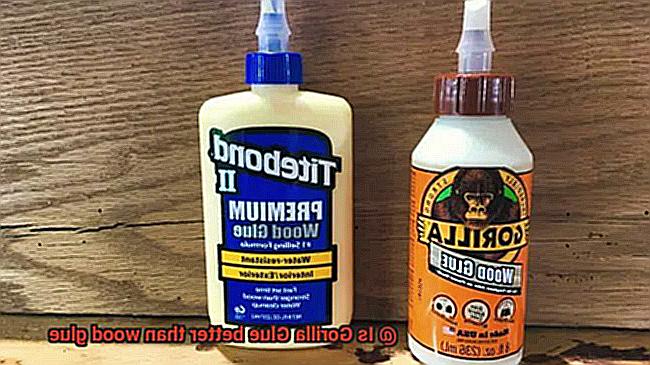
But wait, there’s more. We also have specialty wood glues tailored for specific requirements:
- Moisture-Resistant Glue: As the name suggests, this type of glue is engineered to withstand exposure to moisture and humidity without compromising the bond. It’s ideal for outdoor projects or areas prone to water splashes.
- Heat-Resistant Glue: Need to work with high temperatures? No sweat. Heat-resistant wood glues can handle the heat, making them perfect for laminating or veneering projects.
No matter which type of wood glue you choose, proper surface preparation is critical. Clean, dry, and debris-free surfaces ensure a strong bond. And don’t forget about applying even pressure during clamping.
Advantages of Gorilla Glue over Wood Glue
When it comes to DIY projects, the right adhesive can be the difference between a masterpiece and a disaster. While wood glue has been a workshop staple, it’s time to step up your game with Gorilla Glue. This powerhouse adhesive offers several advantages over traditional wood glue, making it a go-to choice for professionals and DIY enthusiasts alike. In this blog post, we’ll explore six reasons why Gorilla Glue reigns supreme in the world of adhesives.
Unbeatable Bonding Strength:
Gorilla Glue takes bonding strength to new heights. Its exceptional holding power creates a bond that surpasses wood glue, ensuring durable and long-lasting results for furniture repairs and woodworking projects.
Versatility at its Finest:
Why limit yourself to bonding just wood? Gorilla Glue can bond various materials, including metal, stone, ceramic, foam, glass, and more. This versatility makes it essential for tackling diverse projects and working with different materials without worrying about whether your glue will hold up.
Water-Resistant Wonder:
Unlike wood glue that weakens when exposed to moisture, Gorilla Glue is water-resistant. Use it confidently for outdoor projects or in areas prone to humidity or rain without compromising the integrity of your bond.
Fill in Those Gaps:
Gorilla Glue’s expanding properties set it apart from wood glue. As it cures, it expands and fills gaps, creating a tight bond even on uneven surfaces. It’s perfect for joining materials with irregularities or filling gaps that would challenge wood glue alone.
Time is of the Essence:
Waiting for glue to dry can be agonizing during a project. Gorilla Glue dries faster than wood glue, with most products fully curing within 24 hours. Get back to work or handle your bonded materials sooner, saving precious time and keeping your project on track.
Withstands Extreme Temperatures:
Heat or cold won’t faze Gorilla Glue. Unlike wood glue that can become brittle or lose its bond when exposed to extreme temperatures, Gorilla Glue remains strong and reliable. It’s an excellent choice for projects with temperature fluctuations or items subjected to heat or cold over time.
Disadvantages of Gorilla Glue Compared to Wood Glue
When it comes to choosing the right glue for your woodworking projects, it’s important to consider the disadvantages of Gorilla Glue compared to wood glue. While Gorilla Glue is a powerhouse adhesive known for its strength and versatility, it does have some drawbacks that make traditional wood glue a better option in certain situations.
One major disadvantage of Gorilla Glue is its foaming nature. When applied to a surface, the glue expands as it cures, filling any gaps or voids in the material. While this can be advantageous in some cases, it can also be problematic for delicate or precise woodworking projects. The foaming action can cause the glue to spread beyond the intended area, resulting in a messy and uneven bond.
Another drawback of Gorilla Glue is its longer curing time compared to wood glue. While wood glue can often dry within minutes, Gorilla Glue typically takes several hours to fully cure. This extended curing time can be inconvenient for projects that require quick assembly or immediate use.
Furthermore, Gorilla Glue is not water-resistant when fully cured. Although it provides excellent strength when bonding wood, it can deteriorate when exposed to moisture over time. This makes it less suitable for applications where the glued joints may come into contact with water or high humidity.
In addition, Gorilla Glue has a tendency to expand as it cures, which can result in the joint being slightly raised or uneven. This can be problematic for projects that require a flush and seamless bond between two pieces of wood.
Moreover, Gorilla Glue is not reversible like some wood glues. If a mistake is made during the bonding process or if the joint needs to be disassembled in the future, Gorilla Glue cannot be easily undone without damaging the wood surfaces. In contrast, certain wood glues allow for the joint to be separated by applying heat or moisture.
Lastly, Gorilla Glue tends to be more expensive than traditional wood glues. While its strength and versatility make it a popular choice for various applications, the higher cost can be a deterrent for those on a tighter budget.
Drying Time for Gorilla Glue and Wood Glue
Today, we’re going to compare two heavyweights: Gorilla Glue and wood glue. These glues have their own unique properties, but what we really want to know is how long it takes for them to dry. So, put on your safety goggles and let’s explore.
Let’s start with Gorilla Glue, a true powerhouse in the adhesive world. This polyurethane-based glue is known for its strength and versatility. But beware, folks, because Gorilla Glue can be a bit finicky when it comes to drying time. In optimal conditions, you’re looking at about 1 to 2 hours for it to dry completely. But hold your horses. Don’t be fooled by appearances – just because it looks dry on the surface doesn’t mean it’s ready for action. Brace yourselves, because it can take up to a whopping 24 hours for the bond to reach its maximum strength. Talk about testing your patience.
Now let’s turn our attention to wood glue, also known as carpenter’s glue or yellow glue. This water-based adhesive is specifically designed for woodworking projects and knows its way around a piece of lumber. When it comes to drying time, wood glue is the hare to Gorilla Glue’s tortoise. In ideal conditions, it can dry within a speedy 30 minutes to an hour. But wait, there’s more. Just like Gorilla Glue, it can take up to 24 hours for the bond to fully cure and reach its maximum strength.
But what factors affect drying time, you ask? Well, temperature and humidity play a starring role in this drama. If you’re working in a warm and dry environment, you’ll see faster drying times. But if the weather is colder or more humid, you might be waiting a bit longer for that bond to form.
Ah, the importance of following instructions. Fellow glue enthusiasts, it’s absolutely crucial to read and follow the manufacturer’s instructions. Applying the right amount of glue is key to achieving a strong bond and ensuring the proper drying time. And don’t forget to clamp or secure those materials together during the drying process. We want that bond to be as tight as a drum.
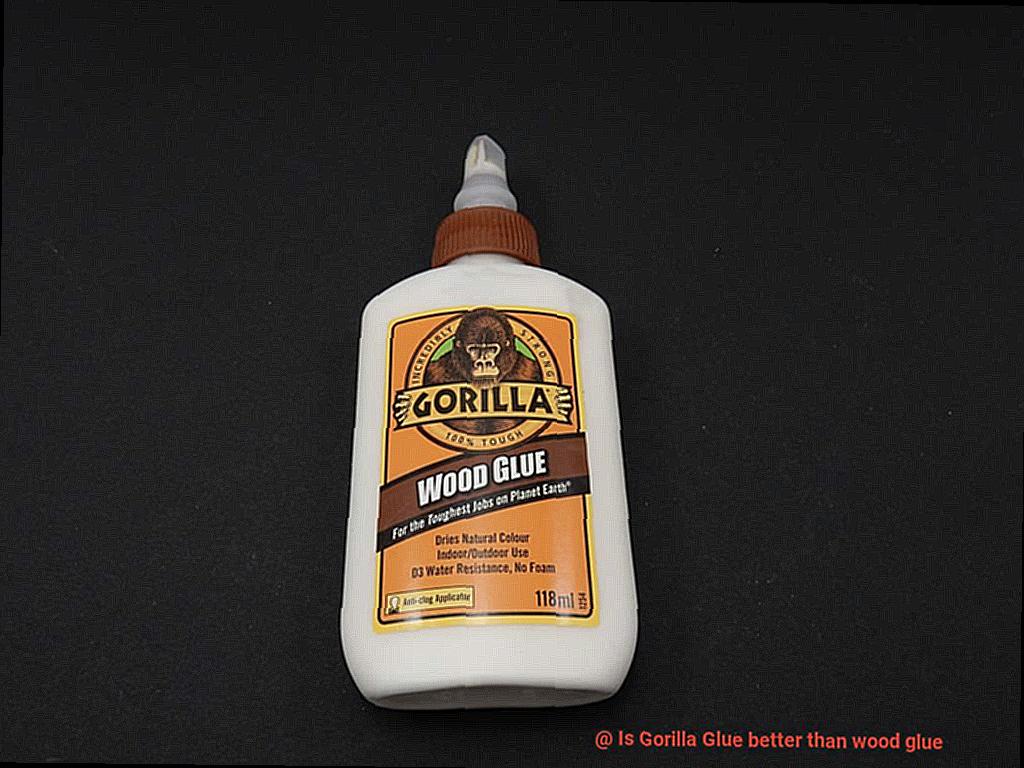
In the battle of drying times, Gorilla Glue and wood glue each bring their own strengths to the table. Gorilla Glue takes its time but offers a versatile and durable bond, while wood glue dries faster and is tailor-made for woodworking projects. Ultimately, it all comes down to your specific needs and desired drying time.
Expansion of Gorilla Glue
Prepare to be captivated by the extraordinary world of Gorilla Glue, a legendary adhesive renowned for its unparalleled strength and versatility. But what truly sets this adhesive superhero apart from the rest? Brace yourselves, for it possesses a unique superpower – the ability to expand as it cures. In this enthralling article, we shall delve into the advantages and disadvantages of this mind-blowing expansion power of Gorilla Glue. So, don your capes and join us on this exciting journey.
Advantages of Expansion:
- Filling Gaps and Void: Witness Gorilla Glue’s astonishing ability to fill gaps and voids like a seasoned hero. When activated by moisture, it expands with uncanny precision, ensuring a solid bond even on uneven or irregular surfaces. No more worries about unsightly gaps or compromised adhesion – Gorilla Glue fills them all.
- Enhanced Adhesion on Porous Materials: Prepare to be amazed by the expanding prowess of Gorilla Glue as it delves deep into porous materials, like an explorer venturing into uncharted territories. Its expansive nature allows it to penetrate wood fibers and other porous surfaces, providing an unyielding grip that defies ordinary adhesives. Say goodbye to feeble bonds and embrace a new era of durability.
- Repairing Cracks and Damages: Have no fear, for Gorilla Glue’s expansion power is here. It swoops in to rescue broken joints and reinforce loose connections effortlessly. With its remarkable expansion properties, it seamlessly fills cracks and repairs damaged areas, resurrecting structural integrity with unmatched ease.
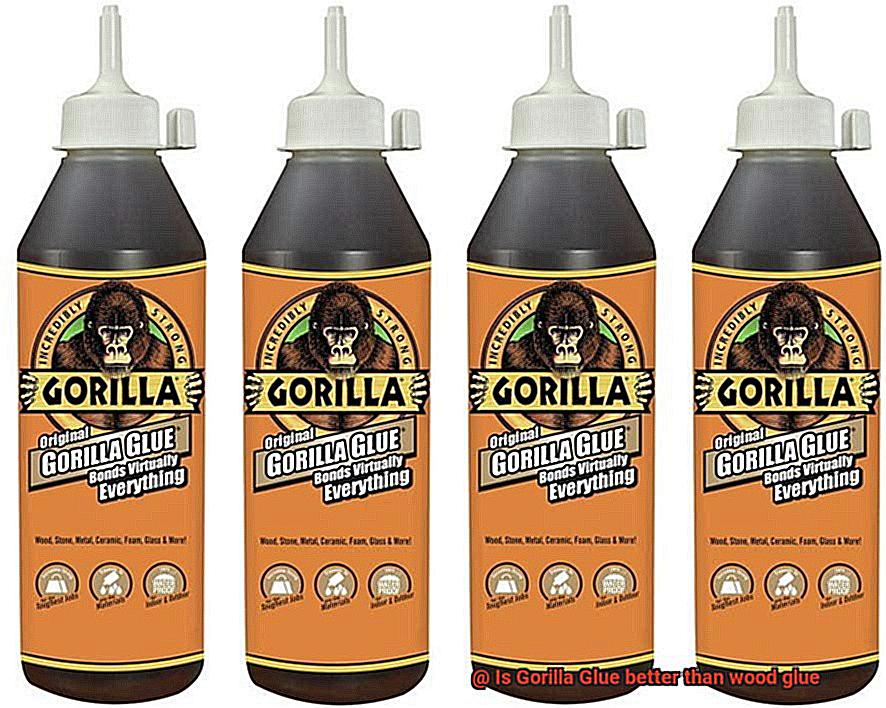
Disadvantages of Expansion:
- Distortions and Warping: As with any superhero power, there are limits to Gorilla Glue’s expansion might. Delicate or precision materials, like masterful woodwork or intricate crafts, may not appreciate the added pressure. Beware of potential distortions and warping that could arise from the glue’s expanding force. Exercise caution when deploying this superpower.
- Moisture Dependency: Unveiling Gorilla Glue’s secret weakness – it relies on moisture to activate its expansion magic. In dry environments or when dealing with moisture-deficient materials, consider alternative options like traditional wood glue that don’t necessitate moisture for activation. Remember, every superhero has a kryptonite.
Water Resistance of Gorilla Glue and Wood Glue
In this comprehensive analysis, we will explore the key differences between these two adhesives and shed light on why Gorilla Glue reigns supreme when it comes to water resistance. So, hold onto your hats and get ready to dive into the watery world of glue.
The Power of Gorilla Glue:
Gorilla Glue is a formidable opponent when it comes to water resistance. Its exceptional ability to withstand moisture and exposure to water makes it the go-to choice for outdoor projects or any applications where the glued surface may come into contact with H2O.
The Secret Behind Gorilla Glue’s Water Resistance:
What makes Gorilla Glue stand out is its unique chemical composition. It contains polyurethane, a compound that reacts with moisture to create an unyielding bond. This means that even if your glued masterpiece gets drenched, the bond will remain steadfast.
Wood Glue: Not Quite as Water Resistant:
While wood glue does offer some level of resistance to moisture, it pales in comparison to the water-fighting capabilities of Gorilla Glue. Wood glue typically relies on polyvinyl acetate (PVA) to create its bond, which is not as adept at warding off water as polyurethane.
Precautions for Wood Glue Users:
If you opt for wood glue in projects that may encounter water or moisture, take heed. It’s crucial to take precautions such as applying a waterproof finish or additional sealing methods to safeguard those glued joints.
Performance Showdown: Gorilla Glue vs Wood Glue:
When it comes to water resistance, Gorilla Glue steals the show. It outperforms wood glue in applications where the glued surface may be exposed to wet conditions, such as outdoor furniture, wooden boats, or garden structures. However, it’s worth noting that wood glue has its own strengths and is often preferred for indoor projects with minimal water exposure due to its faster drying time and ease of use.
Glue Compatibility:
While Gorilla Glue boasts excellent water resistance, it’s important to remember that it may not be suitable for all materials. Always read and follow the manufacturer’s instructions and consider the specific requirements of your project before making a final decision on which glue to use.
Cost Comparison Between Gorilla and Wood Glues
Today, we’re here to help you navigate the cost comparison between two popular contenders: Gorilla Glue and wood glue. These adhesives have their own strengths and weaknesses, especially when it comes to cost. Let’s dive into the details and find out which one is the right fit for your project.
Gorilla Glue: Strength, Versatility, and a Heavier Price Tag
If you crave versatility and unyielding strength, then Gorilla Glue will be your go-to adhesive. This adhesive powerhouse can bond not only wood but also metal, stone, ceramic, and more. However, this versatility comes at a cost – quite literally. Gorilla Glue tends to reside on the higher end of the price spectrum compared to its wood glue counterpart.
Wood Glue: Tailored for Wood Projects at a Lower Cost
On the flip side, if your project focuses solely on wood surfaces, then wood glue might be the more budget-friendly option for you. Specifically formulated for bonding wood, this glue provides a robust and durable bond without breaking the bank.
Quantity Matters:
When comparing costs, consider the quantity needed for your project. Gorilla Glue’s high strength and adhesive properties often allow you to use less product to achieve the desired bond. In contrast, wood glue may require larger quantities or multiple layers to achieve the same level of bonding strength.
Shelf Life: Longevity Factor
Don’t forget to take shelf life into account. Gorilla Glue typically boasts a longer shelf life compared to wood glue. So even though it may cost more initially, you can use it for multiple projects over an extended period without worrying about it expiring or losing effectiveness.
The Long-Term Savings Perspective:
Although Gorilla Glue may have a higher upfront cost, its strength and durability can potentially save you money in the long run. If your project demands a sturdy bond and longevity, investing in Gorilla Glue might be worth the higher price.
In the battle of cost between Gorilla Glue and wood glue, there are distinct differences to consider. Gorilla Glue’s versatility, advanced adhesive technology, and ability to bond various materials make it pricier, while wood glue is tailored for wood surfaces and generally costs less. The quantity needed for a project and the shelf life of the glues also play a role in the cost comparison. Ultimately, it’s crucial to weigh your project requirements and budget considerations before making a decision.
xUCB4dhvVlc” >
Also Read: Does Gorilla Glue Work On Fabric?
Conclusion
After careful consideration and analysis, it is evident that Gorilla Glue surpasses wood glue in terms of overall performance and durability.
The exceptional strength and adhesive properties of Gorilla Glue make it the superior choice for various woodworking projects. Its ability to bond different materials with unmatched reliability sets it apart from traditional wood glue.
Furthermore, Gorilla Glue’s water-resistant qualities ensure long-lasting results, even in challenging environments.

